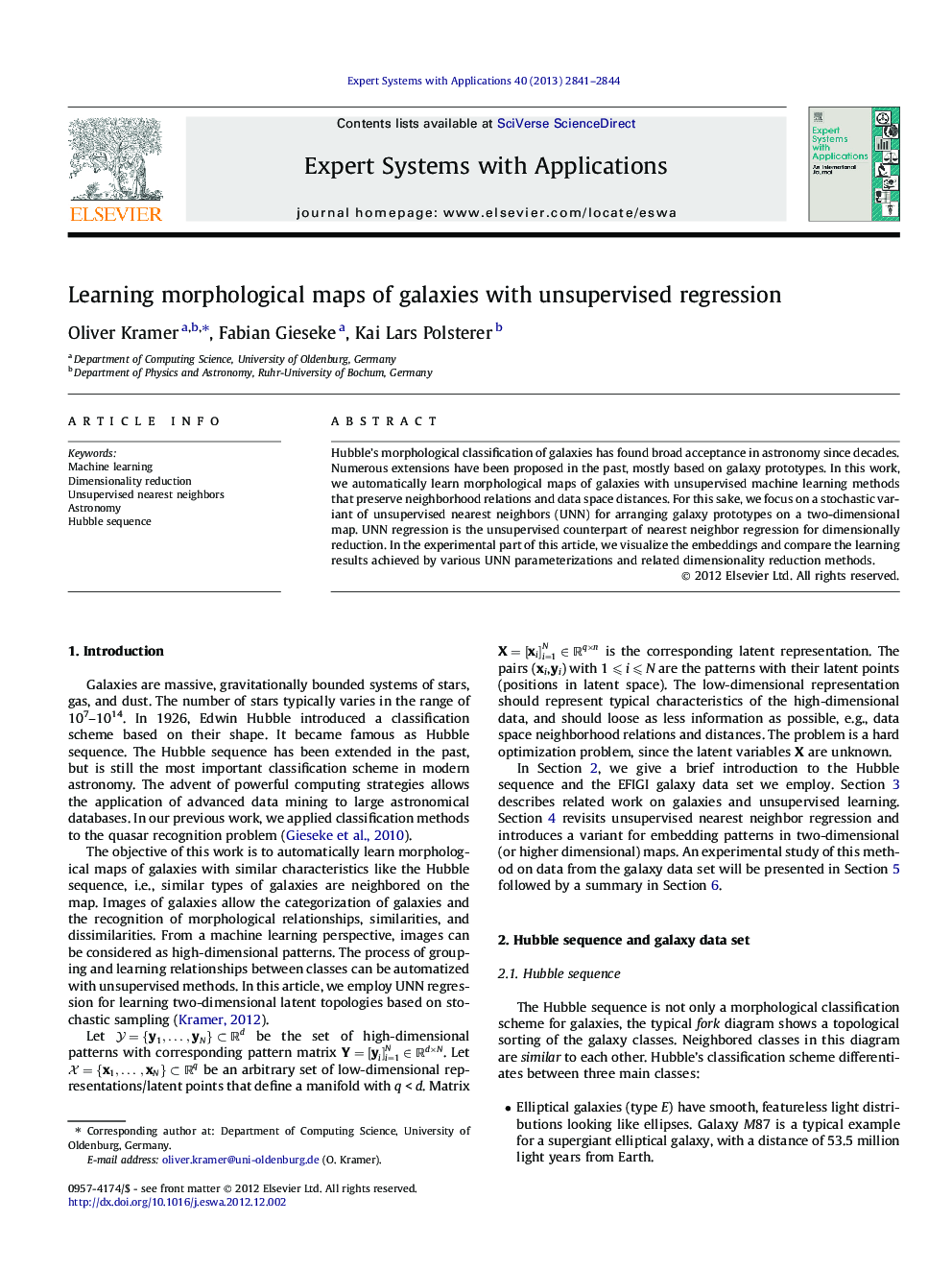| Article ID | Journal | Published Year | Pages | File Type |
|---|---|---|---|---|
| 383938 | Expert Systems with Applications | 2013 | 4 Pages |
Hubble’s morphological classification of galaxies has found broad acceptance in astronomy since decades. Numerous extensions have been proposed in the past, mostly based on galaxy prototypes. In this work, we automatically learn morphological maps of galaxies with unsupervised machine learning methods that preserve neighborhood relations and data space distances. For this sake, we focus on a stochastic variant of unsupervised nearest neighbors (UNN) for arranging galaxy prototypes on a two-dimensional map. UNN regression is the unsupervised counterpart of nearest neighbor regression for dimensionally reduction. In the experimental part of this article, we visualize the embeddings and compare the learning results achieved by various UNN parameterizations and related dimensionality reduction methods.
► We present the first experimental results of unsupervised regression on astronomical data sets. ► Learning low-dimensional representations of galaxy images is related to the Hubble sequence. ► A stochastic variant of unsupervised nearest neighbors is introduced. ► Galaxies with similar shape are neighbored in latent space. ► Galaxies that are not of the same type are further away on the map.
